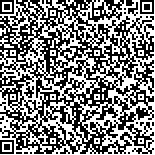| 摘要: |
| 针对过量施用氮肥和地下水硝酸盐超标的现状,探索减量施氮、秸秆替代过量氮肥下土壤氮素的淋失风险,以期为降低氮素淋失风险提供科学依据。通过在河北省徐水县进行连续4年的冬小麦—夏玉米轮作体系田间定位试验,分析耕作(少耕和常规耕作)、施氮量(无机氮0、200和300 kg/hm2)和秸秆(还田、不还田)等措施对作物收获后土壤无机氮累积、土壤—作物体系氮平衡状况以及冬小麦和夏玉米产量的影响。结果表明,小麦收获后,过量施氮处理0~100 cm土壤硝态氮累积量显著高于其它处理,高达221 kg/hm2,过高的土壤残留硝态氮增加玉米高温多雨季氮素淋洗风险。3年氮平衡累积量比较显示,过量施氮、少耕/常规耕作减量施氮秸秆还田3处理的氮平衡值无显著性差异,以少耕减量施氮秸秆还田最低,为236 kg/hm2,过量施氮处理最高,为281 kg/hm2,三者均显著高于少耕/常规耕作减量施氮秸秆不还田处理。冬小麦—夏玉米轮作体系氮平衡值与0~100 cm土层的土壤无机氮、土壤硝态氮累积量呈显著正相关,说明氮素大量盈余会导致0~100 cm土壤剖面无机氮大量累积,尤其是硝态氮大量累积。少耕和常规耕作减量施氮秸秆还田处理的冬小麦、夏玉米产量与过量施氮无显著差异。综合考虑土壤无机氮累积量、氮平衡值和作物产量,少耕或者常规耕作下,可以利用秸秆氮替代过量无机氮,降低氮素淋洗风险。 |
| 关键词: 冬小麦 夏玉米 氮平衡 硝态氮累积 产量 淋洗风险 |
| DOI:10.7621/cjarrp.1005-9121.20160717 |
| 分类号: |
| 基金项目: |
|
| EFFECTS OF REDUCING NITROGEN APPLICATION AND REPLACING PART OF NITROGEN FERTILIZER BY CROP RESIDUE ON NITROGEN LEACHING IN WINTER WHEAT -SUMMER CORN SYSTEM |
|
Yang Xiaomei1, Yin Changbin1, Li Guichun2, Nagumo Fujio3
|
|
1.Institute of Agricultural Resources and Regional Planning,Chinese Academy of Agricultural Sciences,Beijing 100081,China;2.Institute of Environment and Sustainable Development in Agriculture,Chinese Academy of Agricultural Sciences,Beijing 100081,China;3.Japan International Research Center for Agricultural Sciences,Tsukuba 305-8686,Japan
|
| Abstract: |
| There is a growing concern about excessive nitrogen and excessive level of nitrate in groundwater in China. A four-year study in Xushui, Hebei, China was conducted in a winter wheat and summer corn cropping system to compare the effects of soil tillage (minimum tillage without ploughing, full tillage), application of cornstalk residue (none -R, turning back +R) and three N rates (0, 200 and 300 kg N /hm2 as mineral nitrogen) applied to winter wheat on the yield of wheat and subsequent corn, the N balance and the inorganic N accumulation, and then to investigate the possibility of the residue replacing some rate of mineral N in case of N leaching . Moreover, the same rate of mineral N (100 kg/hm2) was applied to all plots for the corn. The results showed that the soil nitrate nitrogen accumulation (221 kg/hm2) in full tillage with 300 kg N /hm2 (FT N300 -R) after wheat harvest was significantly higher than that in the other treatments, the excess nitrogen may increase the risk of nitrogen leaching. The three-year nitrogen balance value in the millage tillage or full tillage with 200 kg N /hm2 and residue turning back (MT N200 +R, FT N200 +R) were not significant.Furthermore, there was significantly positive relationship between nitrogen balance value and nitrate nitrogen accumulated in 0-100cm soil profile, itmeant the greater the N balance value, the more the amount of nitrate nitrogen accumulated. In addition, the yields of wheat and corn in MT N200 +R and FT N200 +R were not significantly different with those in FT N300 -R. It indicatedthat using residue nitrogen as part of mineral nitrogen in the treatment of reducing the rate of nitrogen (200 kg N /hm2) could not only maintain the crop yield and reduce N balance value, but also significantly reduce nitrate nitrogen accumulation after wheat harvest, and hence reduce the risk of N leaching. |
| Key words: winter wheat summer corn nitrogen balance nitrate nitrogen accumulation yield N leaching risk |

